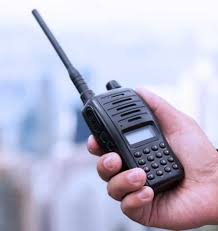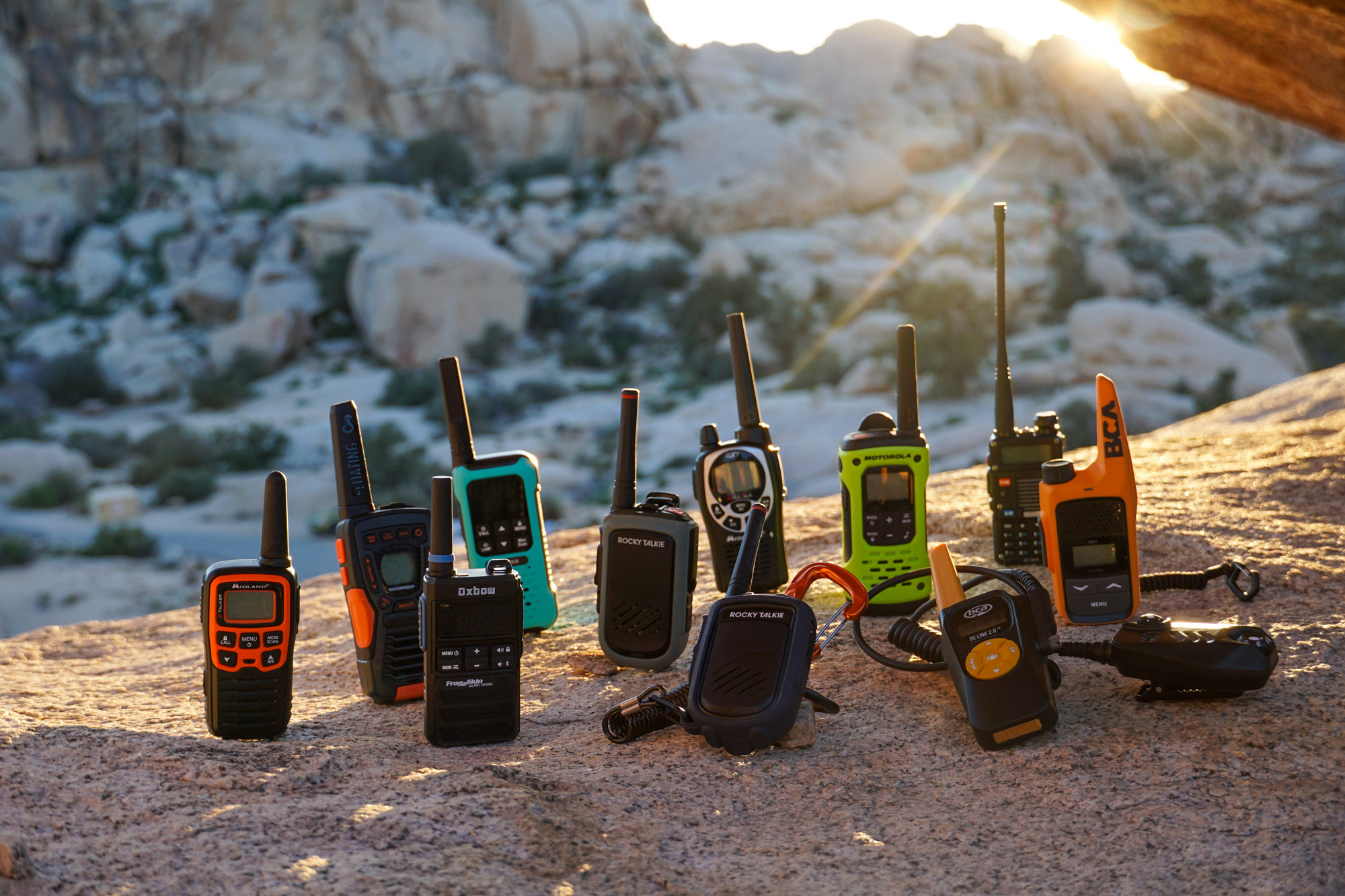The digital age is taking over the world, where the Internet of Things (IoT) and smart devices are reshaping industries. With this technological development, the service industries are undergoing a significant transformation. In the hospitality sector especially, communication plays a vital role in delivering seamless guest experiences, and traditional tools like walkie-talkies have been at the core of operations for years.

However, with advancements in technology such as Artificial Intelligence (AI) integration, smart devices, and IoT, walkie-talkies are evolving beyond basic communication devices into a comprehensive management system.
In an attempt to understand the future of walkie-talkies, coupled with emerging technologies like body-worn cameras, HALO sensors, and SNEOS cameras, we look at how these collaborations can optimise services and streamline operations in the hospitality industry.
Evolution of Walkie-Talkies in Hospitality
Walkie-talkies have long been a staple of communication for on-ground teams in the hospitality industry. From housekeeping to maintenance, concierge to security, these portable devices have provided immediate and reliable communication across large properties.
These devices have not only helped bridge the gap between different departments but also helped ensure that issues are addressed in real time and services are delivered swiftly to guests.
However, traditionally walkie-talkies come with certain limitations. Their functionality is often limited to voice communication, lacking the ability to transmit data or integrate with other functionalities like audio-visual communication that are now crucial in managing large hotels, resorts, and event spaces.
But with the introduction of IoT and smart devices, a shift towards the next generation of communication such as incorporating data, video, AI, and analytics into their communication systems, transforming them into powerful, multi-functional tools is becoming possible.
Walkie-Talkies, IoT, and AI: A Powerful Combination
The integration of IoT and AI into walkie-talkie has made unprecedented levels of communication and operational efficiency.
The hospitality industry is now able to embed smart sensors and devices into the network, making walkie-talkies a part of a larger, interconnected system that can manage not only voice communication but also data transmission, real-time monitoring, and predictive analytics all while improving customer service. Here’s how this combination is proving to be beneficial for hotels, bars, resorts and more
Walkie-talkies enable seamless communication across properties. This is possible because of IoT, where walkie-talkies can connect to other devices such as smartphones, tablets, and smart cameras, allowing team members to communicate across platforms without interruption.
For example, a walkie-talkie connected to a smart device can receive both voice messages and notifications from sensors, like temperature alerts or guest requests, in real time.
Another benefit of such interconnection is AI-driven insights. AI can analyse the data generated from these devices to provide actionable insights for the on-ground team.
In hospitality, this possibility extends from predictive maintenance of equipment, and guest behaviour analytics to anticipating the needs of customers, additionally, this could also mean AI-assisted task management to optimise staffing and reduce response times.
AI and smart devices can also enable task allocation automatically to the nearest staff member to ensure rapid response. For example, if a room requires immediate service, the system can locate the nearest housekeeper, notify them via their walkie-talkie, and track the task until it is completed.
Walkie-talkies also are able to serve a dual purpose when combined with body-worn cameras, HALO sensors, and other surveillance tools, by enabling more comprehensive safety and security monitoring.
AI can quickly process video and sensor data, alerting the team to potential hazards or security issues and allowing for immediate action.
The application of Walkie-Talkies Along with Body-Worn Cameras
Body-worn cameras, originally developed for law enforcement, are proving to be an invaluable addition in the hospitality industry, particularly for security and service management.
When integrated with walkie-talkies, these cameras offer a real-time visual record of incidents, significantly enhancing transparency and accountability for security personnel. Especially in times such as disputes or accidents, security personnel can capture live footage during critical situations providing key evidence that can be reviewed later. This documentation helps resolve conflicts and adds a layer of protection for both staff and guests.
Moreover, body-worn cameras connected to a central command centre allow for real-time monitoring of hotel premises. Especially in cases of unauthorised access or guest quarrels, the footage can be instantly relayed to security teams via walkie-talkies, enabling rapid response.
Additionally, recorded footage serves as an excellent training tool for new staff, helping them understand all the laid-out best practices in guest interactions and emergency management. Management can also use the footage to evaluate staff performance, ensuring high standards of service are maintained throughout the property at all times.
HALO Sensor and Walkie-Talkie
HALO sensors are an advanced technology designed to enhance safety, comfort, and environmental quality in hospitality settings. When connected to walkie-talkies, these sensors provide real-time alerts on a wide range of factors, such as air quality, temperature, humidity, noise levels, and even aggressive behaviour detected with the help of sound pattern analysis.
In situations such as poor air quality in rooms or conference spaces with the help of HALO sensors, this can be quickly identified, and alerts can be sent to housekeeping or maintenance teams via walkie-talkies for immediate resolution, ensuring a comfortable environment for guests.
HALO sensors also play a crucial role in monitoring noise levels, which can impact guest experience and lead to complaints.
Excessive noise in guest rooms or public areas can trigger notifications to staff, who can take prompt action to mitigate the issue.
Additionally, these sensors are built to detect aggressive behaviour, which can be a helpful tool in maintaining safety in high-traffic areas like hotel lobbies or restaurants, especially in bars. If a potential threat is detected, security personnel receive instant alerts on their walkie-talkies, enabling them to respond swiftly and effectively.
SNEOS Cameras and Walkie-Talkie Integration
SNEOS cameras, when combined with walkie-talkies, provide an extremely sophisticated surveillance solution for the hospitality industry.
These smart cameras are capable of not only monitoring crowd flow, and recognising VIP guests through facial recognition, but also analysing behaviour to enhance service quality and security.
For example, during busy events or conferences, SNEOS cameras can monitor crowd density and notify staff via walkie-talkies when an area becomes overcrowded, allowing teams to redirect guests or open additional service counters to reduce wait times.
In luxury hotels, facial recognition technology integrated with SNEOS cameras allows for the seamless identification of VIP guests enabling proper attention and resources being deployed to them.
Staff are notified immediately through their walkie-talkies, enabling personalised service and smooth check-ins, enhancing guest satisfaction and loyalty.
In emergency situations like fires or medical incidents, SNEOS cameras can identify the exact location of the issue and relay critical information to staff via walkie-talkies, ensuring a fast and coordinated response that could potentially save lives.
Even in the case of vaping or smoking in hazardous areas, SNEOS cameras can be a useful tool in ensuring customer and property safety by accurately sensing and notifying the relevant teams.
Walkie-Talkies, AI, and Smart Devices in Action
The integration of walkie-talkies with AI and smart devices is already proving transformative in the hospitality industry, by enhancing guest experiences and operational efficiency of the staff. In one scenario, a large resort connected its walkie-talkies to an AI-driven property management system.
When a guest requested room service via the hotel app, the system immediately identified the nearest available housekeeper to dispatch the exact requirement through walkie-talkies and provided the staff with exact real-time instructions.
This seamless communication reduces the need for housekeeping staff to first visit the room for instruction and provide prompt service while boosting guest satisfaction. You might also consider looking at industry research data to further support this claim.
The research suggested that hotels that use AI-driven task allocation see a 30% improvement in staff efficiency, leading to faster response times and higher guest approval ratings.
In addition to this, using smart surveillance systems like SNEOS cameras integrated with walkie-talkies streamlines large-scale events and conferences while enhancing the ability of the hotel staff to closely monitor the situations.
At a high-profile event, for instance, these cameras monitor crowd flow and notify event managers when certain areas become overcrowded, face disputes or need adjustments in catering areas.
These systems deliver real-time alerts on their walkie-talkies, allowing them to take quick action, such as directing guests to less congested areas or opening additional food counters to ensure guest satisfaction and optimal service. Research suggests that IoT-based crowd management systems can reduce congestion by 25%, improving both safety and overall guest experience.
According to reports, IoT-enabled systems in the hospitality industry can lead to a 10-15% reduction in operating costs and a 20% increase in customer satisfaction. As these technologies continue to evolve, walkie-talkies will remain at the centre of a highly responsive, tech-driven hospitality environment that prioritises guest experiences and operational excellence.
It can be concluded that the future of hospitality is being shaped by the confluence of walkie-talkies with IoT, AI, and smart devices, which help in transforming these traditional tools into sophisticated, modern management systems. By integrating walkie-talkies with AI-powered platforms, body-worn cameras, HALO sensors, and SNEOS cameras, high levels of communication enhancement, safety, and operational efficiency across hotel properties can be achieved.



